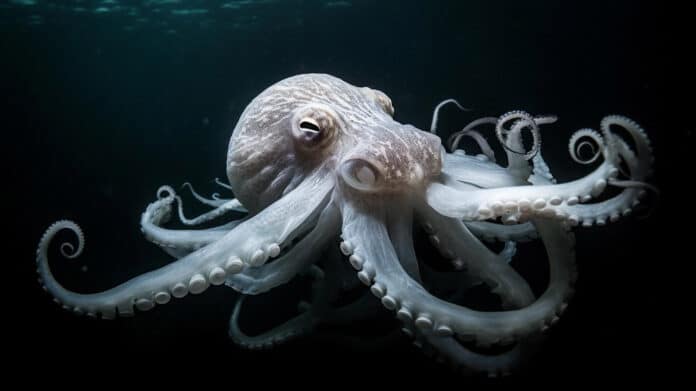Octopuses are among the largest-brained invertebrates and demonstrate a range of sophisticated behaviors, making them ideal for testing the generality of two-stage sleep. In close collaboration with the University of Washington, Okinawa Institute of Science and Technology (OIST) researchers have studied the brain activity and skin patterning of octopuses (Octopus lacquers) during this busy sleep period.
Scientists discovered that they closely resemble neural activity and skin patterning behavior seen when awake. The wake-like activity also occurs during rapid eye movement (REM) sleep in mammals – the phase in which most dreams occur.
The study underlines the striking similarities between octopus sleeping behavior and human sleeping behavior and offers exciting new information about the history and purpose of sleep.
Dr. Leenoy Meshulam, a statistical physicist at the University of Washington, said, “The fact that two-stage sleep has independently evolved in distantly related creatures, like octopuses, which have large but completely different brain structures from vertebrates, suggests that possessing an active, wake-like stage may be a general feature of complex cognition.”
Scientists checked whether the octopuses were truly asleep during this active period. They determined the octopus’s responses to a physical stimulus. They discovered that the octopuses needed more stimulation during both the calm and active stages of sleep than when awake.
The researchers also found that if they kept the octopuses awake or disturbed them when they were in the active stage of sleep, they later entered active sleep more frequently and faster. This shows that the active stage is a vital sleep stage needed for octopuses to function properly.
The researchers also studied the octopuses’ active and sleeping brain activity. They saw distinct brain waves during peaceful sleep that closely resembled waveforms known as sleep spindles observed during non-REM sleep in mammalian brains. Even inside humans, the precise role of these waveforms is unknown, but scientists think they play a role in memory consolidation.
Later, they used a cutting-edge microscope that showed these sleep spindle-like waves occur in regions of the octopuses’ brains associated with learning and memory. This suggests these waves serve a similar function to humans.
The research team also used 8K resolution to record and analyze the octopuses’ changing skin patterns when awake and asleep. They saw how each pigmented cell behaves to create an overall skin pattern.
Octopuses can control hundreds of small, colored skin cells while awake, allowing them to produce a wide variety of diverse skin patterns. They employ these patterns for social or threat displays, such as warding off predators, interacting with one another, and camouflaging themselves in various surroundings. The researchers found that the octopuses cycled through these same skin patterns while actively sleeping.
Scientists said, “The similarities between active sleep and awake states could be explained by various reasons. One theory is that octopuses may practice their skin patterns to improve their waking camouflage behavior or simply maintain the pigment cells.”
“Another intriguing idea is that the octopuses could be re-living and learning from their waking experiences, such as hunting or hiding from a predator, and reactivating the skin pattern associated with each experience. In other words, they could be doing something similar to dreaming.”
Senior author Professor Sam Reiter, who leads the Computational Neuroethology Unit at OIST, said, “In this sense, while humans can verbally report what kind of dreams they had only once they wake, the octopuses’ skin pattern acts as a visual readout of their brain activity during sleep.”
Journal Reference:
- Pophale, A., Shimizu, K., Mano, T. et al. Wake-like skin patterning and neural activity during octopus sleep. Nature (2023). DOI: 10.1038/s41586-023-06203-4
